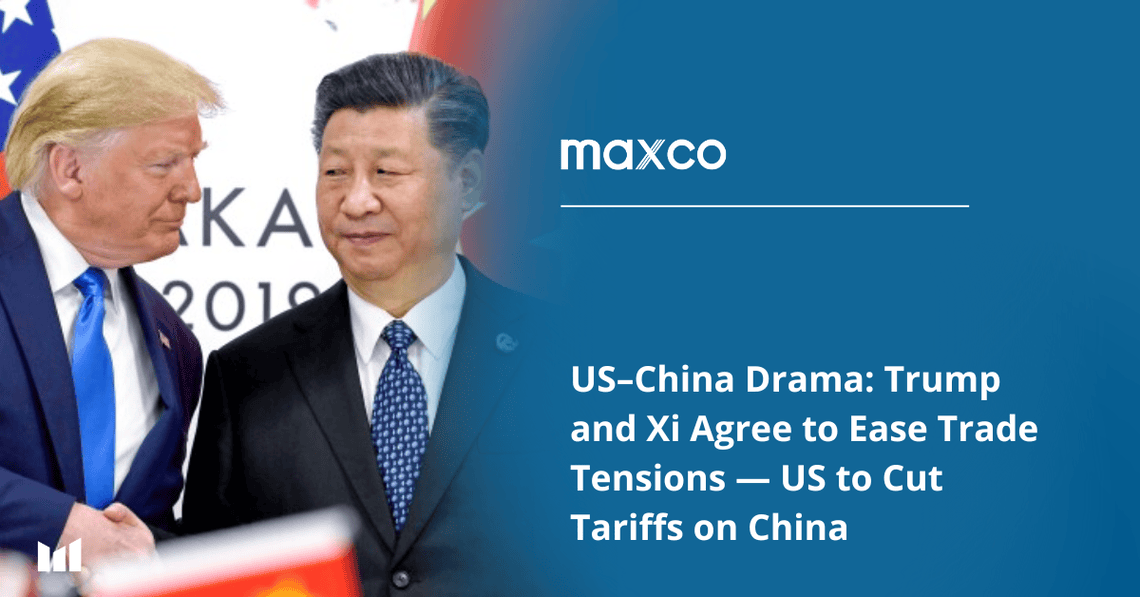MAXCO FUTURES – The high-level meeting between U.S. President Donald Trump and Chinese President Xi Jinping in Busan, South Korea, on Thursday (Oct 30) marked one of the most significant moments in trade relations between the world’s two largest economies since tensions escalated earlier this year.
In what Trump described as an “amazing meeting,” the two leaders reached an agreement to lower most import tariffs and revive strategic trade channels between Washington and Beijing.
Tariffs Cut, But Not the End of the Trade War
Trump announced that U.S. tariffs on Chinese goods would be reduced from around 57% to 47%, a major move signaling the easing of trade sanctions from the tariff war era. Sharper cuts were applied to products related to fentanyl precursors—chemical substances often misused in the production of synthetic opioids—with tariffs lowered from 20% to 10%.
The White House described the move as part of a bilateral agreement to strengthen cooperation in combating cross-border drug trafficking. Meanwhile, market analysts viewed the policy as opening the door for the recovery of trade flows in industrial goods and raw materials previously hindered by high import duties.
Beijing’s Concessions: Agricultural Purchases and Rare Earth Exports
In return, President Xi committed that China would resume large-scale purchases of U.S. agricultural products—including soybeans and corn—starting within the next few weeks, echoing the Phase One Trade Deal of 2019.
Additionally, Beijing agreed to suspend restrictions on rare earth exports to the U.S. for one year. These materials are vital for America’s high-tech, electric vehicle, and defense industries. The suspension is seen as a key signal that China aims to restore trust and avoid further escalation in the strategic industrial conflict.
Trump Hails Meeting as a “Huge Success”
Speaking to the media after the talks, Trump described his meeting with Xi as “truly extraordinary,” even rating it “12 out of 10.” He emphasized that the agreement would pave the way for further cooperation, including possible reciprocal state visits between Washington and Beijing in the near future.
However, observers cautioned against interpreting the meeting as a “full reconciliation.”
“This looks more like a tactical ceasefire than a strategic reset,” said an Asia political analyst at Eurasia Group. “Tariffs may have been lowered, but at 47%, they still represent extreme levels by global trade standards.”
Market Reaction: Optimistic but Cautious
Global markets responded positively to the development. Asian stock indices rose in early Friday trading, while the Chinese yuan strengthened slightly against the U.S. dollar. Commodities such as soybeans and rare earth metals also saw modest rebounds.
Still, investors remain cautious, awaiting details on the implementation of the agreement—particularly regarding China’s agricultural purchase commitments and enforcement measures against fentanyl trafficking. Without concrete follow-through, market confidence could fade quickly.
Outstanding Issues
Despite marking a turning point in U.S.–China trade relations, several core issues remain unresolved, including:
- China’s industrial policy and state subsidies,
- Technology security and semiconductor export controls, and
- Geopolitical tensions in the Taiwan Strait.
In short, the Busan agreement represents a first step toward stabilization, not the end of the structural conflict between the world’s two largest economies.
Ade Yunus
Global Market Strategies
